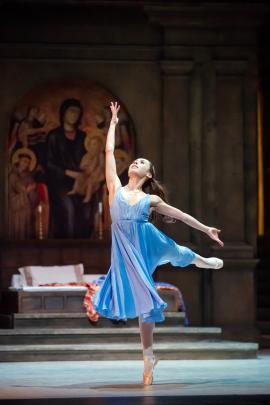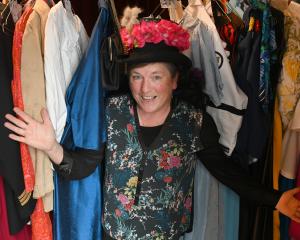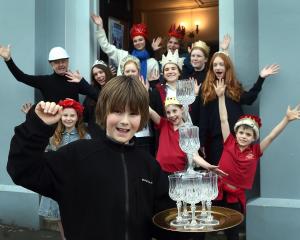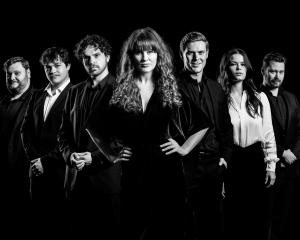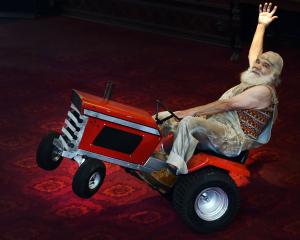He spent his formative years in Dunedin before going on to dance with the likes of the great ballet dancer and choreographer Rudolf Nureyev in Australia and Europe. Frederic Jahn tells Rebecca Fox about life as an international dancer.
International dancer and ballet master Frederic Jahn still remembers that spine-tingling moment he knew he wanted to be a performer - he was standing on the stage of an empty Dunedin theatre staring into the darkness.
''My hair stood up on end. You could smell it, the electricity in the air. I took a bow,'' Jahn (68) said, laughing.
We are sitting in the office of the Royal New Zealand Ballet's ballet master - Jahn is the guest ballet master for the RNZB's production of Romeo and Juliet.
The small windowless office with a desk, chair and sofa seems quite a mundane place for the conversation about Jahn's journey from his early childhood in Jakarta to his international ballet career to becoming a handyman and then a ballet master.
Jahn and his family left Jakarta in the 1950s after the former Dutch colony gained independence. His mother was Dutch, his stepfather, Ludwig Werner, half-Indonesian.
''We were smuggled out by servants. I can very clearly remember having a rug chucked over us as we crouched down on the floor in the car.''
The family successfully got to the port and sailed for Singapore where they sorted out their immigration papers. They had decided to come to New Zealand as his mother's sister lived in Dunedin.
They arrived in 1957 and his stepfather joined the New Zealand Ballet. But with a family of five to feed, he realised he could not continue.
So they came to Dunedin where his father opened a dance school and got involved with the Dunedin Operatic Society.
''I didn't like being a dancer because of all the hassle I got at school. As I had a father who was a dancer I was called a poof, so if I danced it was doubly worse. I got black eyes. I didn't enjoy it much.''
However, a dancer he was to become after being spotted by another national ballet dancer while using his father's studio.
So at 15 he left school and headed to Wellington to see if he could make the grade.
''It was the start of my dancing career.''
He soon flew the coop for Australia, gaining positions in the Queensland Ballet and then the Australian Ballet.
It was during this time that he met Rudolf Nureyev, considered to be the world's greatest male dancer. It turned out to be a watershed meeting for Jahn.
''He was a tremendous inspiration. So different from anything else. He wiped out a whole generation of that feminine-look male dancers were wont to have in those days.''
Seeing Nureyev perform in La Cosaire - the incredibly high leaps - left a huge impression on Jahn. He finally became ''interested'' in dance at that point.
To Jahn, Nureyev was a ''phenomenal genius''.
''Apart from his temperament, but in most cases it came down to him not being able to tolerate stupidity. Most of the time he blew up was because something was not right.''
Jahn followed Nureyev's advice and headed to Europe in 1973 where he joined the national theatre in Munich. Frustrated by the structured work pattern of the company, he moved to Amsterdam and joined the Dutch National Ballet.
The ballet master there immediately knew he had worked with Nureyev by the way he held himself. ''I'd inadvertently picked up his habits.''
However, his goal was to get to England, so he moved on to the Scottish Ballet before settling at the English National Ballet for nearly 10 years. ''I spent most of my [dance] life there.''
He also met Patricia Ruanne, who was to become his wife, in England. A ballerina with the Royal Ballet, English National Ballet, Ruanne had worked with Nureyev on many ballets.
In 1984, Jahn decided he needed a change. So he signed up for night classes and ''hung up the tights''.
''I liked working with my hands, doing woodwork, and I had an eye for designing things.''
He credited the discipline of his dance days with helping develop a successful carpentry business.
To make ends meet, he also drove a mini cab at night.
When Ruanne retired she was invited to become ballet mistress for the Paris Opera Ballet. The pair tried commuting but it did not work, so Jahn moved to France where, after a short time as an assistant ballet master, he became ballet master for the Florence Ballet.
''Then I got a telephone call from the Paris Opera asking if I wanted to be ballet master so I accepted.''
Ruanne and he were living in the same city and together put on Nureyev's Romeo and Juliet.
After five years working together in Paris they decided to take a sabbatical, ending up in Guadelope, an island in the French West Indies.
''It's all very French. You live as the French do, but on a Caribbean island.''
The loved it so much they bought some land and built a house, thinking they might never go back to Paris. ''We had a wonderful time.''
They decided to base themselves from the island and travel for work.
Jahn ended up working as ballet master at La Scala.
''In Italy, work does not come first; life comes first. You have to accept it. The work gets done in the end.''
His New Zealand connections drew him back here in 2010 to hold classes and seminars for dancers.
''They were very popular. We were asked back again. Then we decided why don't we stay a while.''
So from 2012 to 2014 they stayed in Christchurch, teaching dancers, before he was lured back to Europe by a phone call from Rome.
''It's a magical place. I could use a word I hate so much, 'awesome'.''
He has returned to New Zealand this time because of his experience putting on Romeo and Juliet and was enjoying every minute.
''It's been 40 years now I've been involved in Nureyev's productions. Pat played Juliet and I Tybalt.''
This time round he is here to help the dancers, pass on his expertise in the fight scenes and give tips on the overall production.
''It's been put together very cleverly. I know the music backwards. It's my sixth production.''
Jahn is part of a ''dream team'' put together by choreographer and former RNZB artistic director Francesco Ventriglia for the production. It also includes Academy Award-winning costume and set designer James Acheson, lighting designer Jon Buswell, choreographic assistant Gillian Whittingham and dramaturg Mario Mattia Giorgetti.
He did not think the RNZB would be able to pull it off given the size of its company - it has 35 dancers - as Nureyev productions normally involved 80 dancers on stage and 60 extras.
He has been ''super impressed'' by how the RNZB has produced Romeo and Juliet. The music, costumes and sets are all ''magic''.
''And I've seen some really crap ones. I'm thrilled it has worked out so well.''
Ventriglia said he had ''dreamed'' of putting on Romeo and Juliet for many years but had never been brave enough to take on such a great piece of work, but in New Zealand he had found the right time and right team to do so.
''It was a combination of great things.''
Knowing the dancers also helped as he could picture certain dancers in certain roles, such as Abigail Boyle as Lady Capulet.
''It was natural they'd take the face of my dancers.''
It has confirmed to him that his ''happy place'' is in choreography and storytelling, although he has not ruled out returning to artistic direction one day.




